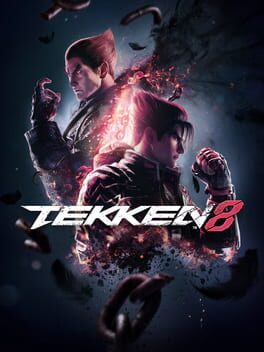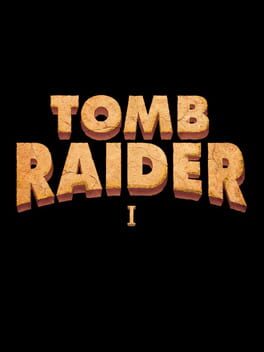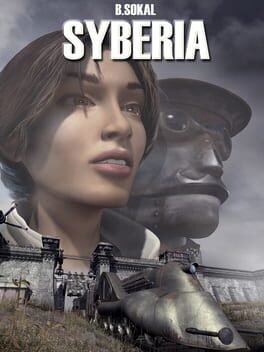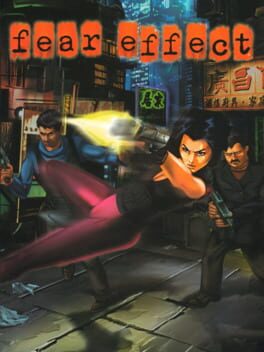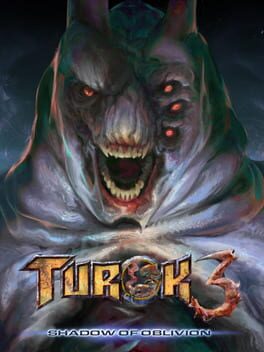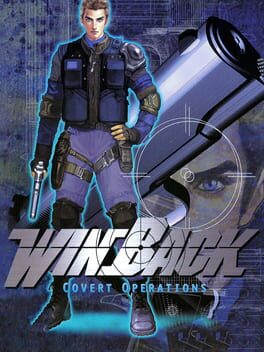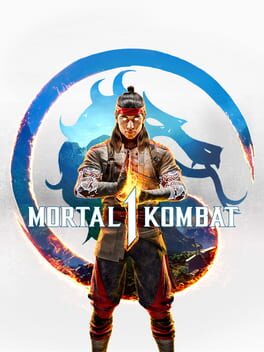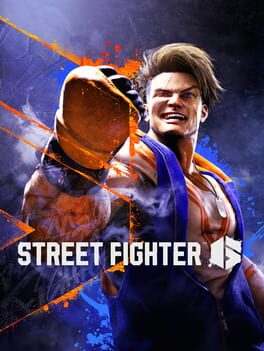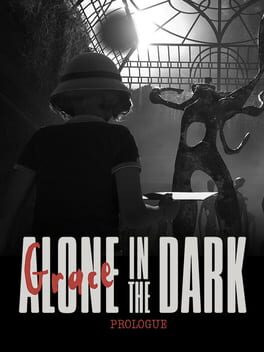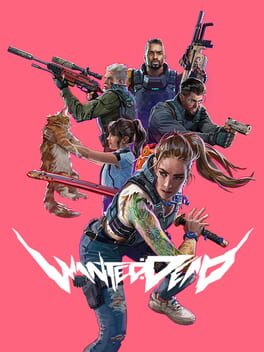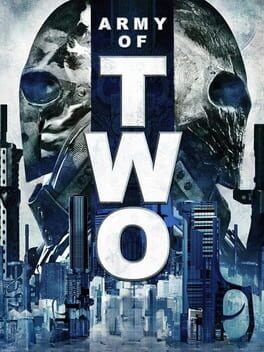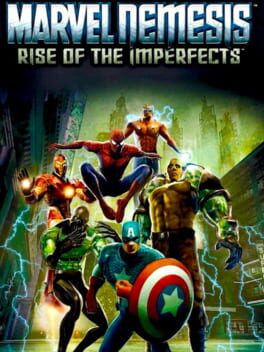BigBossHayabusa
2024
My opinion has shifted on Tekken 8 since it made a splash back in January. What started as a global event and a celebration of Tekken and the FGC as a whole has turned into perhaps the most tilting, dishonest fighting games ever created. I’m not writing this all pissed-off after a lackluster night on ranked. I’ve stopped playing for a few days and I feel no reason to go back.
Tekken 8 is miserable.
The first obvious issue is the heat system. It’s horrible. With a press of a button you get an attack that is fully tracking, plus on block, fast, armored, and launches if opponent is airborne. Once in heat, many characters get insanely powerful moves that do everything. Launch, plus on block, infinite range, you name it. Not only are these moves incredibly unbalanced and braindead, but they rip much on the integrity of Tekken straight out. Tekken has always been a knowledge check type of fighting game. There has always been bullshit moves that you need to lab. However, that’s not the case with these heat attacks. There’s absolutely nothing you can do. There shouldn’t be moves in fighting games with no counter play. They feel cheap to go up against and they feel dirty to use. It’s so disingenuous and braindead.
Heat is not the only problem however. Everything is just so over-tuned. Defense is a guessing game. It seams like every attack clips you if you try to sidestep, even with plus frames.
So many strings jail on block so you can’t duck and punish. Neutral is gutted by insanely powerful WR moves that are nearly homing and grant plus 7 if not more. Low parry was nerfed significantly making defense much worse. Many of the best characters in the game have heat smashes that fully track and grant plus frames, leaving you a sitting duck in neutral.
Defense has been gutted. Neutral has been gutted. Offense has been simplified with braindead moves. Pluggers are still a problem. Rank boosters quit after one lose. Feng still isn’t nerfed. Dragunov is still doing 70% on one launch. Devil Jin still has his heat smash. Xiayou still has a mid-mid-mid string that’s plus and a non-launch punishable unseeable snake edge. Counter-hit and homing throws are still a problem.
With all these factors, I find myself wondering: “is this even better than Tekken 7?” I hold out hope that with some balance patches and some key nerfs that Tekken 8 can still be the greatest Tekken. But as of now? It’s probably the worst Tekken of my lifetime.
Tekken 8 is miserable.
The first obvious issue is the heat system. It’s horrible. With a press of a button you get an attack that is fully tracking, plus on block, fast, armored, and launches if opponent is airborne. Once in heat, many characters get insanely powerful moves that do everything. Launch, plus on block, infinite range, you name it. Not only are these moves incredibly unbalanced and braindead, but they rip much on the integrity of Tekken straight out. Tekken has always been a knowledge check type of fighting game. There has always been bullshit moves that you need to lab. However, that’s not the case with these heat attacks. There’s absolutely nothing you can do. There shouldn’t be moves in fighting games with no counter play. They feel cheap to go up against and they feel dirty to use. It’s so disingenuous and braindead.
Heat is not the only problem however. Everything is just so over-tuned. Defense is a guessing game. It seams like every attack clips you if you try to sidestep, even with plus frames.
So many strings jail on block so you can’t duck and punish. Neutral is gutted by insanely powerful WR moves that are nearly homing and grant plus 7 if not more. Low parry was nerfed significantly making defense much worse. Many of the best characters in the game have heat smashes that fully track and grant plus frames, leaving you a sitting duck in neutral.
Defense has been gutted. Neutral has been gutted. Offense has been simplified with braindead moves. Pluggers are still a problem. Rank boosters quit after one lose. Feng still isn’t nerfed. Dragunov is still doing 70% on one launch. Devil Jin still has his heat smash. Xiayou still has a mid-mid-mid string that’s plus and a non-launch punishable unseeable snake edge. Counter-hit and homing throws are still a problem.
With all these factors, I find myself wondering: “is this even better than Tekken 7?” I hold out hope that with some balance patches and some key nerfs that Tekken 8 can still be the greatest Tekken. But as of now? It’s probably the worst Tekken of my lifetime.
2024
A worthy remaster that does nothing to dampen how extraordinary the original Tomb Raider is. The new graphics are good, but they lack color when compared to the original. The main draw is the addition of 60 FPS. There’s some misplaced textures and the camera is slightly worse than the camera in classic graphics mode, but overall it’s short comings do not get in the way of experiencing one of the greatest games ever made. I highly recommend this. This is a remaster done right.
Oh, and don’t play with modern controls. Take 5 minutes and learn how to meticulously operate Lara with the precise tank controls.
Oh, and don’t play with modern controls. Take 5 minutes and learn how to meticulously operate Lara with the precise tank controls.
2002
2024
2000
Unlike the cinematic AAA releases of modern gaming today, Fear Effect doesn’t sacrifice what makes games fun to play in order to achieve an engrossing experience.
While recent AAA games often prioritize cinematic experiences at the expense of player agency, Fear Effect seamlessly blends cinematic elements with gameplay that demands active participation. Instead of mindlessly going through the motions with unenthusiastic side quests and simplistic action, you are constantly problem solving and thinking quickly on your feet. You don’t need to sacrifice effective gameplay to have a cinematic experience, and Fear Effect proves that.
The narrative is a winding and strange tale featuring morally gray characters and an eccentric plot that defies expectations set by disc 1. While relatively straightforward and easy to follow, it remains engaging due to how unique it is. The unexpected twists and turns, unparalleled plot devices, and impressive pacing will leave you eager to see what happens next.
This game is a technical marvel. Every single background is an FMV, similar to a sparse few scenes in Final Fantasy VII. They transition smoothly and the various surroundings are all breathing and full of life. But it’s not all looks, the FMV’s are a huge part of Fear Effect’s gameplay philosophy, as boss fights and puzzles use these often. Fear Effect is only 7 or so hours and it’s on 4 discs. It could be the shortest 4 disc game in the PS1’s library, but I’m not sure.
While Fear Effect is more simple in level design and lacks a consistent labyrinthine structure such as those found in survival horror contemporaries, it compensates in surprising ways. The intuitive combat, with its quick invincible dodge roll, stealth elements, remarkable enemy variety, and real-time ammo and weapon management is possibly the best combat found in a fixed camera-angle tank control release, only rivaled by the intense fast-paced arcade action of Dino Crisis 2. The wholly unique set-pieces that work congruently with pre-established gameplay mechanics offer ever-changing variety. Moreover, the puzzles in Fear Effect strike a perfect balance. They are challenging enough to engage players and make you rack your brain, yet avoid veering into cryptic territory. I was able to complete Fear Effect without referring to a guide. All these aspects contribute to the creation of fantastic level design. It is simpler than something like the original Resident Evil but still succeeds in keeping the player in a perpetual state of problem-solving and critical thinking.
Getting into Fear Effect can be a bit daunting, however. It’s a difficult game with swift deaths during combat and has a reliance on a trial and error design philosophy. Granted, there are sections in Fear Effect that exhibit poor design, showcasing trial and error at its most frustrating, The initial helicopter encounter and the train boss fight being prime offenders that come to mind. However, these instances, while occasionally perplexing, were seldom frustrating. They never dissuaded my pursuit of the next plot revelation, combat challenge, or mind-bending puzzle.
The trial and error design and swift deaths can be peculiar at times. Staring at the loading screen for 10 seconds isn’t fun, but the rest of this game sure is. It seamlessly blends enthralling storytelling and cinematic elements without sacrificing gameplay whatsoever. Fear Effect excels at survival horror puzzle solving and action. The level design is less complex than the contemporaries on the PS1, but it successfully blends it’s elements together to make an immersive experience that I’d recommend to survival horror fans, PS1 enthusiasts, and anyone that enjoys good video games.
9/10
While recent AAA games often prioritize cinematic experiences at the expense of player agency, Fear Effect seamlessly blends cinematic elements with gameplay that demands active participation. Instead of mindlessly going through the motions with unenthusiastic side quests and simplistic action, you are constantly problem solving and thinking quickly on your feet. You don’t need to sacrifice effective gameplay to have a cinematic experience, and Fear Effect proves that.
The narrative is a winding and strange tale featuring morally gray characters and an eccentric plot that defies expectations set by disc 1. While relatively straightforward and easy to follow, it remains engaging due to how unique it is. The unexpected twists and turns, unparalleled plot devices, and impressive pacing will leave you eager to see what happens next.
This game is a technical marvel. Every single background is an FMV, similar to a sparse few scenes in Final Fantasy VII. They transition smoothly and the various surroundings are all breathing and full of life. But it’s not all looks, the FMV’s are a huge part of Fear Effect’s gameplay philosophy, as boss fights and puzzles use these often. Fear Effect is only 7 or so hours and it’s on 4 discs. It could be the shortest 4 disc game in the PS1’s library, but I’m not sure.
While Fear Effect is more simple in level design and lacks a consistent labyrinthine structure such as those found in survival horror contemporaries, it compensates in surprising ways. The intuitive combat, with its quick invincible dodge roll, stealth elements, remarkable enemy variety, and real-time ammo and weapon management is possibly the best combat found in a fixed camera-angle tank control release, only rivaled by the intense fast-paced arcade action of Dino Crisis 2. The wholly unique set-pieces that work congruently with pre-established gameplay mechanics offer ever-changing variety. Moreover, the puzzles in Fear Effect strike a perfect balance. They are challenging enough to engage players and make you rack your brain, yet avoid veering into cryptic territory. I was able to complete Fear Effect without referring to a guide. All these aspects contribute to the creation of fantastic level design. It is simpler than something like the original Resident Evil but still succeeds in keeping the player in a perpetual state of problem-solving and critical thinking.
Getting into Fear Effect can be a bit daunting, however. It’s a difficult game with swift deaths during combat and has a reliance on a trial and error design philosophy. Granted, there are sections in Fear Effect that exhibit poor design, showcasing trial and error at its most frustrating, The initial helicopter encounter and the train boss fight being prime offenders that come to mind. However, these instances, while occasionally perplexing, were seldom frustrating. They never dissuaded my pursuit of the next plot revelation, combat challenge, or mind-bending puzzle.
The trial and error design and swift deaths can be peculiar at times. Staring at the loading screen for 10 seconds isn’t fun, but the rest of this game sure is. It seamlessly blends enthralling storytelling and cinematic elements without sacrificing gameplay whatsoever. Fear Effect excels at survival horror puzzle solving and action. The level design is less complex than the contemporaries on the PS1, but it successfully blends it’s elements together to make an immersive experience that I’d recommend to survival horror fans, PS1 enthusiasts, and anyone that enjoys good video games.
9/10
Another amazing remaster by Nightdive studios. Unfortunately, this time their efforts went towards a mid game. Turok 3 isn’t bad nor is it boring and tedious, it is however somewhat lifeless and uninspired. The level design in Turok 3 is generally good, but the exploration is way tuned down from Turok: DH and especially Seeds of Evil. This may sound appealing, but when you strip out Turok’s exploration, you start to realize that the combat can’t carry the entire experience. The weaponry is still great and the spectacle of the gore and dismember still leaves me in awe. I just feel the game never throws enough at the player. There’s not enough enemies, there’s not enough secrets, there’s not enough puzzles; it’s just all a bit plain outside of the visceral combat. Still worth a playthrough or two. It’s only 4 hours.
What’s most impressive in Winback’s design is it’s dedication to it’s groundbreaking ideas. For being the first third-person cover-based shooter, it’s extremely confident in a gameplay philosophy that has never been attempted. All the combat is no-frills cover shooting, and it exceeds at it better than any game since. The third-person cover-shooter genre was pioneered and simultaneously peaked at the exact same time; the absolute zenith of the genre.
Yes, Winback: Covert Operations is that good.
Pulling off consecutive headshots in Winback is a state of gaming euphoria only matched by the Issen in Onimusha or counter launchers in God Hand; A technique that requires finesse over such a simple mechanic. You can either try subtlety adjusting the thumbstick with precise movements, or just hold up and time your shots exactly depending on the cover you are exiting from. Either way, it’s immensely satisfying. Enemies can eat more than half a clip from your handgun if you don’t hit the head. Standing out of cover while dumping bullets down range is a recipe for taking heavy damage. You die quickly in Winback. You will not survive in the long-term if you run out of cover and dive around like Max Payne.
One of my favorite things a game can do is incentivize the best way to play. The most fun way to play should also be the most effective way, and this is certainly the case with Winback. Not only does Winback reward extra points for headshots (known as “lethal hits”) at the end of each level, but it’s also the most effective way to ensure your survival through each stage. Staying in cover, meticulously popping off quick headshots, limiting your exposure to enemies, choosing the most effective weaponry for the situation and positioning yourself in a preeminent line of sight in the level geometry is not only paramount to survival, but also the most rewarding way to play.
Another impressive aspect of Winback is the classic Japanese-style level design that they have flawlessly intertwined with the addicting combat. While not being a confusing game, the level design isn’t a linear batch of corridors filled with chest-high walls like you might expect. Winback has puzzles, backtracking, and smart level layouts that keep the experience from becoming stagnant. Reoccurring mechanics such as destructible boxes, switches, and laser traps combine together to create some fun little brain teasers in between the encounters. I cannot stress enough how brilliantly paced Winback is. While the game never changes substantially, it does continue to combine its’ gameplay elements, as sparse as they are, in new and engaging ways.
However, I do believe that Winback could have benefited from a bit more variety. What's here is near flawless, blasting through a dynamic array of ever-changing combat encounters, escalating puzzles, and the occasional boss battle, but that is all there is to the game. Winback manages to avoid becoming boring or tedious; in fact, it remains far from it. However, the game is surprisingly long, clocking in at over 12 hours. Winback could have been further enriched with the inclusion of another puzzle element to add to the mix, some sort of reoccurring mini-game, or even a few player-influenced set-pieces.
While the environments here lean on the drab side, with office buildings, factories, and sewers sharing a generic and similar color pallet, the arcade aesthetic shines through to dampen the environment’s shortcomings. Enemies are color coordinated and act differently depending on the color. Some might have different weapons while others may be more aggressive and rush you. Additionally, where you shoot enemies dictates the color of the hit effect. Even the UI is arcadey, with individual bullets representing your ammo count. Its all obviously inspired by rail gun shooters at the time, such as Time Crisis and Virtua Cop. In a lot of ways, Winback is Time Crisis in third-person form.
Winback is still the best cover-based shooter because it avoids all the pitfalls that made all the 7th generation chaff so uninteresting – no waiting around in cover for regenerating health to come back, no tedious encounters that feel identical to the last, and no uninvolved scripted events. It maintained player agency and effective level-design, establishing itself as the pinnacle of a genre yet to be fully realized.
Also, please don’t play the PS2 version. Now that I’ve played the N64 version, I realize how brutal some of the changes are. The AI is terrible for the level design and achieving headshots has had all the skill stripped out of it. The PS2 version is really not worth it. Play the N64 version or don’t play it at all.
Yes, Winback: Covert Operations is that good.
Pulling off consecutive headshots in Winback is a state of gaming euphoria only matched by the Issen in Onimusha or counter launchers in God Hand; A technique that requires finesse over such a simple mechanic. You can either try subtlety adjusting the thumbstick with precise movements, or just hold up and time your shots exactly depending on the cover you are exiting from. Either way, it’s immensely satisfying. Enemies can eat more than half a clip from your handgun if you don’t hit the head. Standing out of cover while dumping bullets down range is a recipe for taking heavy damage. You die quickly in Winback. You will not survive in the long-term if you run out of cover and dive around like Max Payne.
One of my favorite things a game can do is incentivize the best way to play. The most fun way to play should also be the most effective way, and this is certainly the case with Winback. Not only does Winback reward extra points for headshots (known as “lethal hits”) at the end of each level, but it’s also the most effective way to ensure your survival through each stage. Staying in cover, meticulously popping off quick headshots, limiting your exposure to enemies, choosing the most effective weaponry for the situation and positioning yourself in a preeminent line of sight in the level geometry is not only paramount to survival, but also the most rewarding way to play.
Another impressive aspect of Winback is the classic Japanese-style level design that they have flawlessly intertwined with the addicting combat. While not being a confusing game, the level design isn’t a linear batch of corridors filled with chest-high walls like you might expect. Winback has puzzles, backtracking, and smart level layouts that keep the experience from becoming stagnant. Reoccurring mechanics such as destructible boxes, switches, and laser traps combine together to create some fun little brain teasers in between the encounters. I cannot stress enough how brilliantly paced Winback is. While the game never changes substantially, it does continue to combine its’ gameplay elements, as sparse as they are, in new and engaging ways.
However, I do believe that Winback could have benefited from a bit more variety. What's here is near flawless, blasting through a dynamic array of ever-changing combat encounters, escalating puzzles, and the occasional boss battle, but that is all there is to the game. Winback manages to avoid becoming boring or tedious; in fact, it remains far from it. However, the game is surprisingly long, clocking in at over 12 hours. Winback could have been further enriched with the inclusion of another puzzle element to add to the mix, some sort of reoccurring mini-game, or even a few player-influenced set-pieces.
While the environments here lean on the drab side, with office buildings, factories, and sewers sharing a generic and similar color pallet, the arcade aesthetic shines through to dampen the environment’s shortcomings. Enemies are color coordinated and act differently depending on the color. Some might have different weapons while others may be more aggressive and rush you. Additionally, where you shoot enemies dictates the color of the hit effect. Even the UI is arcadey, with individual bullets representing your ammo count. Its all obviously inspired by rail gun shooters at the time, such as Time Crisis and Virtua Cop. In a lot of ways, Winback is Time Crisis in third-person form.
Winback is still the best cover-based shooter because it avoids all the pitfalls that made all the 7th generation chaff so uninteresting – no waiting around in cover for regenerating health to come back, no tedious encounters that feel identical to the last, and no uninvolved scripted events. It maintained player agency and effective level-design, establishing itself as the pinnacle of a genre yet to be fully realized.
Also, please don’t play the PS2 version. Now that I’ve played the N64 version, I realize how brutal some of the changes are. The AI is terrible for the level design and achieving headshots has had all the skill stripped out of it. The PS2 version is really not worth it. Play the N64 version or don’t play it at all.
2023
It’s been a while since I’ve been on this site but I’m glad to be back. Between my non-stop playing of fighting games such as SF6 and MK1 and replaying the MGS series due to the remaster, I haven’t played much new in a while. But I’m back, and hopefully here to stay.
Anyway, RoboCop. This game is good, albeit a tad shallow unfortunately.
As a fan of the source material, RC masterfully encapsulates the essence of the Robocop universe. This is a perfect example of how to make a licensed game, as every minute detail is captured. Even the layout of the precinct is consistent with the movie. The narrative of RC is also conforming to the classic films. Yet again the OCP are a multifaceted private mega-corporation that own Detroit. RoboCop struggles with his humanity as he fights in the name of Justice for the citizens of Old Detroit. It’s another great story in the universe of RoboCop and mirrors the thematic themes of the franchise perfectly.
The gameplay even represents RoboCop well. This is a gory game, and RoboCop is not moving at breakneck speeds. The combat is methodical and precise. Enemies can take dozens of body shots, but their heads and crouches explode with one well placed bullet from your auto-9. RoboCop is a walking tank peaking around corners and using various abilities that you periodically unlock through skill points. Unfortunately, that’s where the positives of the gunplay end, as this combat is shallow.
There’s not much player agency. The player feedback is great and the spectacle of the gore will dazzle players (myself included), but underneath the surface is combat that fails to impress at a high level. None of your abilities are vital until the endgame. Regular enemies are far too easy and later enemies are far too spongy. All you’ll be doing is waiting in cover and then peaking out once a useful ability such as the shield or slow-motion has recharged. You can do some cool stuff against regular goons such as throwing them into each other and chaining moves together, but by the end of the game, this will be impractical as you’ll be shredded for giving more than 2 enemies a line of sight at you. This is one of my pet peeves. The best way to play should be the most fun way. Unfortunately in RC, this isn’t the case.
It’s not all combat however. Much like Terminator: Resistance, Teyon’s previous game, RoboCop: Rogue City is an action-RPG.
RC introduces a diverse range of crime scene investigations and side quests, offering players a variety of activities. While the storytelling and world-building during these quests is mostly excellent, the player engagement is lacking. Your decisions do matter and they will impact future events, but the missions themselves are formulaic. The player will mostly be walking around and scanning various points of interest with shootouts dispersed intermittently. It’s not bad whatsoever, but there’s not much going on here gameplay wise. It offers a smooth experience that’s likely not to bore you, but ultimately lacks depth.
I was expecting a bit more from this release. After the flawed yet charming Terminator: Resistance, I figured Teyon would break through to deliver a modern classic. The storytelling and world building really does the heavy-lifting here. Along with its impressive respect for the source material, it’s the only aspect of the game that soars above mediocrity. While Robocop: Rogue City is wholly competent and offers generous variety, the main gameplay is unfortunately shallow and inconsequential. Don’t let my 6/10 score deter you however, especially if your a fan of the films. Over my 16 or so hours, I was never bored or was wishing to play something else. It accomplishes that at the very least.
6/10
Anyway, RoboCop. This game is good, albeit a tad shallow unfortunately.
As a fan of the source material, RC masterfully encapsulates the essence of the Robocop universe. This is a perfect example of how to make a licensed game, as every minute detail is captured. Even the layout of the precinct is consistent with the movie. The narrative of RC is also conforming to the classic films. Yet again the OCP are a multifaceted private mega-corporation that own Detroit. RoboCop struggles with his humanity as he fights in the name of Justice for the citizens of Old Detroit. It’s another great story in the universe of RoboCop and mirrors the thematic themes of the franchise perfectly.
The gameplay even represents RoboCop well. This is a gory game, and RoboCop is not moving at breakneck speeds. The combat is methodical and precise. Enemies can take dozens of body shots, but their heads and crouches explode with one well placed bullet from your auto-9. RoboCop is a walking tank peaking around corners and using various abilities that you periodically unlock through skill points. Unfortunately, that’s where the positives of the gunplay end, as this combat is shallow.
There’s not much player agency. The player feedback is great and the spectacle of the gore will dazzle players (myself included), but underneath the surface is combat that fails to impress at a high level. None of your abilities are vital until the endgame. Regular enemies are far too easy and later enemies are far too spongy. All you’ll be doing is waiting in cover and then peaking out once a useful ability such as the shield or slow-motion has recharged. You can do some cool stuff against regular goons such as throwing them into each other and chaining moves together, but by the end of the game, this will be impractical as you’ll be shredded for giving more than 2 enemies a line of sight at you. This is one of my pet peeves. The best way to play should be the most fun way. Unfortunately in RC, this isn’t the case.
It’s not all combat however. Much like Terminator: Resistance, Teyon’s previous game, RoboCop: Rogue City is an action-RPG.
RC introduces a diverse range of crime scene investigations and side quests, offering players a variety of activities. While the storytelling and world-building during these quests is mostly excellent, the player engagement is lacking. Your decisions do matter and they will impact future events, but the missions themselves are formulaic. The player will mostly be walking around and scanning various points of interest with shootouts dispersed intermittently. It’s not bad whatsoever, but there’s not much going on here gameplay wise. It offers a smooth experience that’s likely not to bore you, but ultimately lacks depth.
I was expecting a bit more from this release. After the flawed yet charming Terminator: Resistance, I figured Teyon would break through to deliver a modern classic. The storytelling and world building really does the heavy-lifting here. Along with its impressive respect for the source material, it’s the only aspect of the game that soars above mediocrity. While Robocop: Rogue City is wholly competent and offers generous variety, the main gameplay is unfortunately shallow and inconsequential. Don’t let my 6/10 score deter you however, especially if your a fan of the films. Over my 16 or so hours, I was never bored or was wishing to play something else. It accomplishes that at the very least.
6/10
2023
I’m surprised by MK1. Gameplay wise, this is easily the greatest game NRS has made and it could be the greatest game in the Mortal Kombat franchise. Single player content is lacking and the story mode is laughable to say the least. If you’re a casual or the type of player to not play against live opponents, I could see this release being a massive disappointment. As someone who relishes in competition, this is exactly what I wanted. MK1 strikes an intriguing balance between the balls to the wall rushdown 50/50 spam of MKX and the methodical footsy focus of MK11.NRS has fixed the main issues with MK11. Gone are the ridiculous amounts of options on wake-up, gone is the devastating lack of combo variety. The frame data for each character in MK1 makes for a much improved rushdown mixup game.
Online still needs some work. Compared to Street Fighter 6, released earlier this year, it’s pathetic. There’s no reason for a high-budget fighting game released in 2023 to not have Wi-Fi filtering, cross play, and lobbies.
Overall, I’m having a lot of fun grinding Kombat league and finding insane setups in the lab.
Online still needs some work. Compared to Street Fighter 6, released earlier this year, it’s pathetic. There’s no reason for a high-budget fighting game released in 2023 to not have Wi-Fi filtering, cross play, and lobbies.
Overall, I’m having a lot of fun grinding Kombat league and finding insane setups in the lab.
I don’t know about this one, guys. There’s no gameplay elements pushing me in any desired direction. Playing skillfully and precisely yields nothing more than circle strafing holding down attack buttons. Maybe I’ve given up too soon, but AC6 is boring and mid to me. Games like Vanquish and especially Gunvalkyrie do what this game does better.
2023
It speaks volumes to a competitive game’s design when you don’t find yourself being frustrated with mechanics, cheap tactics, or dishonest characters. Every win feels earned and every loss feels like you could’ve done something better. Getting tilted in SF6 usually boils down to something along the lines of “I should’ve punished that!” Or “I keep dropping that combo!” Never once in all my sweaty ranked lobbies or bouts in the battle hub have I been dissatisfied with the game itself.
Street Fighter 6 is remarkably balanced. I haven’t seen such a tightly nit group of fighters in a tournament fighter in my lifetime. I main Lily, a consensus bottom 2-4 and I stand by everything I said in the paragraph above. It’s truly that even
This may be my favorite group of mechanics in a 2D fighter. SF6 is a metamorphosis of systems from the past three Street Fighters. Such a mismatch sounds like it could be disastrous or at the very least distracting or overwhelming. The drive system is genius and balanced well. The return of multiple supers is welcome and adds a new layer of depth. Drive impact can be abusable at low level, but it’s effectiveness becomes limited at intermediate levels. Drive rush is certainly powerful. Lots of players are complaining about it only costing one bar, but all I think it needs is punish counter state added throughout it’s entirety.
I didn’t expect Street Fighter 6 to be this good. After the disaster that was Street Fighter V (until it got really good towards season 3 onward), I was skeptical of SF6. I didn’t even pick the game up on launch day. I have to say that I’m so glad that I tried this game out. Easily my game of the year and could be the greatest fighting game ever made.
9/10
Street Fighter 6 is remarkably balanced. I haven’t seen such a tightly nit group of fighters in a tournament fighter in my lifetime. I main Lily, a consensus bottom 2-4 and I stand by everything I said in the paragraph above. It’s truly that even
This may be my favorite group of mechanics in a 2D fighter. SF6 is a metamorphosis of systems from the past three Street Fighters. Such a mismatch sounds like it could be disastrous or at the very least distracting or overwhelming. The drive system is genius and balanced well. The return of multiple supers is welcome and adds a new layer of depth. Drive impact can be abusable at low level, but it’s effectiveness becomes limited at intermediate levels. Drive rush is certainly powerful. Lots of players are complaining about it only costing one bar, but all I think it needs is punish counter state added throughout it’s entirety.
I didn’t expect Street Fighter 6 to be this good. After the disaster that was Street Fighter V (until it got really good towards season 3 onward), I was skeptical of SF6. I didn’t even pick the game up on launch day. I have to say that I’m so glad that I tried this game out. Easily my game of the year and could be the greatest fighting game ever made.
9/10
2023
Pure unadulterated 6th gen zoomer filter
Wait, this was released just this year? How could this be?
In all seriousness though, I’m never trusting a journalist’s review ever again. I had interest in Wanted: Dead until I saw IGN’s 4/10 review calling it a bad game. I know not to trust these publications positive reviews, but usually when reviews are this low, there’s something very wrong. That’s not the case with Wanted: Dead.
Wanted: Dead is not only good, but it’s great; A beautiful seamless blend of cover shooting and hack n slash. The shooting is responsive and features great feedback. The melee combat is simple, yet engaging and challenging. Mixing these together could result in a mess, but the enemy variety, balancing and health system makes it harmonious.
Staying in cover blasting away results in running out of ammo and health. Much like Doom (2016) and Eternal, running away and hiding will get you killed. You heal from preforming the melee takedown animations and regular melee attacks. You can still use the cover shooting mechanics in an attempt to take out enemies at long range or thin out the horde, but the melee combat is what allows the player to regain health and build adrenalin. Adrenalin is basically your devil trigger or god hand, activating it shoots nearby enemies with your handgun leaving them open for a “glory kill”.
As for the melee combat itself, the only comparison I can make is Sekiro: Shadows Die Twice. Parry enemies’ basic strings and then use the handgun counter on the moves that flash red. It’s simple and it could have used a few more types of enemies. At least there are bosses that have unique strings and abilities.
My biggest complaint with Wanted: Dead is that it doesn’t evolve much. The game doesn’t change much past the first level. Sure, there’s new enemies and a skill tree that unlocks new moves, but the lack of any real level design, platforming, or puzzles makes it more paced like a beat ‘em up than a traditional 6th gen character action game like Devil May Cry or Ninja Gaiden. Still, I didn’t find myself getting bored. It throws waves and waves of enemies at you with new combinations.
The checkpoints are stretched really far apart. It can be frustrating (especially a certain one of level 4) but overall I think it ties in well with the design they were going for. Wanted: Dead also has some jank but who cares? I don’t know why people get so upset about this. I glitched out of bounds twice, some of the animations froze during the glory kills, the chainsaw can miss right through enemies, a few times I couldn’t pickup a med kit, but if you’re gonna let that get in your way you’re not playing video games for the right reasons.
Wanted: Dead’s world is bursting with personality. There’s multiple goofy mini games and strange yet compelling voice acting.
Lieutenant Stone’s VA specifically is strange. Theres a few lines delivered poorly, but her unique tone makes it memorable. With all the extra side content I barely touched, I’m surprised how short the game was. It’s set up like a much longer game, complete with an HQ area and challenge arena, but it only lasted 7 hours for me. The story starts as a confusing mess without any structure, but eventually in the penultimate level, the twists and turns make sense of most of it without spelling it all out.
The devs of Wanted: Dead proclaimed it to be a “love letter to the 6th generation of games” and that’s absolutely what it is, warts and all. I cannot fathom someone playing this game and legitimately thinking it’s “bad”. It’s straightforward challenging fun. Get filtered.
8/10
Wait, this was released just this year? How could this be?
In all seriousness though, I’m never trusting a journalist’s review ever again. I had interest in Wanted: Dead until I saw IGN’s 4/10 review calling it a bad game. I know not to trust these publications positive reviews, but usually when reviews are this low, there’s something very wrong. That’s not the case with Wanted: Dead.
Wanted: Dead is not only good, but it’s great; A beautiful seamless blend of cover shooting and hack n slash. The shooting is responsive and features great feedback. The melee combat is simple, yet engaging and challenging. Mixing these together could result in a mess, but the enemy variety, balancing and health system makes it harmonious.
Staying in cover blasting away results in running out of ammo and health. Much like Doom (2016) and Eternal, running away and hiding will get you killed. You heal from preforming the melee takedown animations and regular melee attacks. You can still use the cover shooting mechanics in an attempt to take out enemies at long range or thin out the horde, but the melee combat is what allows the player to regain health and build adrenalin. Adrenalin is basically your devil trigger or god hand, activating it shoots nearby enemies with your handgun leaving them open for a “glory kill”.
As for the melee combat itself, the only comparison I can make is Sekiro: Shadows Die Twice. Parry enemies’ basic strings and then use the handgun counter on the moves that flash red. It’s simple and it could have used a few more types of enemies. At least there are bosses that have unique strings and abilities.
My biggest complaint with Wanted: Dead is that it doesn’t evolve much. The game doesn’t change much past the first level. Sure, there’s new enemies and a skill tree that unlocks new moves, but the lack of any real level design, platforming, or puzzles makes it more paced like a beat ‘em up than a traditional 6th gen character action game like Devil May Cry or Ninja Gaiden. Still, I didn’t find myself getting bored. It throws waves and waves of enemies at you with new combinations.
The checkpoints are stretched really far apart. It can be frustrating (especially a certain one of level 4) but overall I think it ties in well with the design they were going for. Wanted: Dead also has some jank but who cares? I don’t know why people get so upset about this. I glitched out of bounds twice, some of the animations froze during the glory kills, the chainsaw can miss right through enemies, a few times I couldn’t pickup a med kit, but if you’re gonna let that get in your way you’re not playing video games for the right reasons.
Wanted: Dead’s world is bursting with personality. There’s multiple goofy mini games and strange yet compelling voice acting.
Lieutenant Stone’s VA specifically is strange. Theres a few lines delivered poorly, but her unique tone makes it memorable. With all the extra side content I barely touched, I’m surprised how short the game was. It’s set up like a much longer game, complete with an HQ area and challenge arena, but it only lasted 7 hours for me. The story starts as a confusing mess without any structure, but eventually in the penultimate level, the twists and turns make sense of most of it without spelling it all out.
The devs of Wanted: Dead proclaimed it to be a “love letter to the 6th generation of games” and that’s absolutely what it is, warts and all. I cannot fathom someone playing this game and legitimately thinking it’s “bad”. It’s straightforward challenging fun. Get filtered.
8/10
2008
What separates Army of Two from other generic 7th gen cover shooters is its agro mechanic.
When firing, you’ll gradually build more and more enemy attention on you as long as your ally isn’t firing at the same time. When the bar is filled, your teammate is practically invisible to the enemy. They can go on along the flanks and take out targets that are oblivious to their position. Certain weapons and upgrades build varying amounts of agro.
You regenerate health very slowly in Army of Two. Balancing which player has the agro is important because if only one player has it all the time, they’ll eventually get rushed and killed.
When the agro system works, it works great. It’s possible to complete Army of Two largely ignoring the mechanic, but simply firing from cover without strategy will result in a frustrating experience with loads of downtime. However, I wish the mechanic was stressed a bit more. While “invisible”, you’ll still be shot at if enemies don’t have line of sight on your full-agro teammate. Flanking too out of the way doesn’t benefit you. It turn more into running down the middle and shooting opponents at point blank.
There’s not a whole lot to say about Army of Two besides the agro. The story is generic, but I like military conspiracy stories. Tyson and Salem are great characters that bounce off each other well. Their banter is humorous and genuine. There’s noticeable clunk in the gameplay. When enemies run towards you it’s very hard to shoot them at close range. Additionally, the melee is very clunky. There’s no shoulder swap, making getting on cover unintuitive. The level design is bland and uninspired, but that’s to be expected from this type of game. At least it doesn’t take control away from the player often with terrible set-pieces. There’s a few here and there, but overall, it’s a straight-forward player-controlled game.
Army of Two is mid, but enjoyable. The upgrade system leads to a hefty amount of replay value with a friend. Communication with you partner works and is the smartest way to play. Army of Two isn’t anything special, but I’d recommend it to those that want a coop game to play with a buddy.
5/10
When firing, you’ll gradually build more and more enemy attention on you as long as your ally isn’t firing at the same time. When the bar is filled, your teammate is practically invisible to the enemy. They can go on along the flanks and take out targets that are oblivious to their position. Certain weapons and upgrades build varying amounts of agro.
You regenerate health very slowly in Army of Two. Balancing which player has the agro is important because if only one player has it all the time, they’ll eventually get rushed and killed.
When the agro system works, it works great. It’s possible to complete Army of Two largely ignoring the mechanic, but simply firing from cover without strategy will result in a frustrating experience with loads of downtime. However, I wish the mechanic was stressed a bit more. While “invisible”, you’ll still be shot at if enemies don’t have line of sight on your full-agro teammate. Flanking too out of the way doesn’t benefit you. It turn more into running down the middle and shooting opponents at point blank.
There’s not a whole lot to say about Army of Two besides the agro. The story is generic, but I like military conspiracy stories. Tyson and Salem are great characters that bounce off each other well. Their banter is humorous and genuine. There’s noticeable clunk in the gameplay. When enemies run towards you it’s very hard to shoot them at close range. Additionally, the melee is very clunky. There’s no shoulder swap, making getting on cover unintuitive. The level design is bland and uninspired, but that’s to be expected from this type of game. At least it doesn’t take control away from the player often with terrible set-pieces. There’s a few here and there, but overall, it’s a straight-forward player-controlled game.
Army of Two is mid, but enjoyable. The upgrade system leads to a hefty amount of replay value with a friend. Communication with you partner works and is the smartest way to play. Army of Two isn’t anything special, but I’d recommend it to those that want a coop game to play with a buddy.
5/10
You may look at gameplay of Marvel Nemesis and say “hey, it doesn’t look that bad. There’s various Marvel characters, it’s animated fairly well, and it has a unique aesthetic for a comic book game even though the graphics are mid. How bad could it be?”
Well, where do I start?
The combat is dull and unbalanced. Marvel Nemesis is a beat ‘em up with seemingly no depth. There’s a block, regular attack string, and a grab. Each character has a superpower they can activate but it’s either a projectile or makes their regular string more powerful. There’s also objects around the stages you can throw and they are far too powerful. They one shot every base enemy without getting up close.
When actually attack enemies you’ll notice how unresponsive the game is. Its not because of an input delay or slowdown issue, it’s because there’s so many frames of delay at the end of everything you do. You can’t cancel anything except attacks into grab. If an enemy blocks your attack, you’re stuck in place for 2 seconds while projectile enemies rain down missiles that ricochet you into other explosives. Getting knock over results in so much downtime for the player, and you can easily be knock over right away as soon as you get up. Barrels and cars just fly everywhere from offscreen. It’s such an unbalanced mess. You’ll beat some levels with no issues barely getting hit, and others will be a roadblock for no discernible reason. It’s an unbalanced unresponsive mess.
The level design is as bad as possible. Marvel Nemesis has bland environments that are reused CONSTANTLY. Levels play more like bonus challenges you’d unlock more than well thought out coherent structures. No puzzles, no platforming, no creative objectives. It’s always something dull such as “defeat 20 enemies!” Or “destroy the objects!”. These stages last about 2-5 minutes. Every time you finish one, you’ll feel a huge relief that you’re closer to the end of this catastrophe.
The boss fights are horrendous and there’s so many of them. There’s usually a boss fight after every two “beat ‘em up” levels. Multiple explosives going off at once stack so you can easily kill bosses in less than 20 seconds if they ricochet off of them. However, the opposite is also true. You can get absolutely steamrolled by these bosses because of these stacking explosives. Battles are more so a competition to who can throw more stuff at the opponent than a clash between unique super-powered heroes. I also had FOUR bosses kill themselves by flying off the edge.
This game is also strangely disrespectful to the source material. I’m more of a DC guy, but having these new generic characters known as “The Imperfects” kill multiple prominent Marvel heroes is silly. It’s trying to be dark and edgy, but it comes off as the develops saying that “our new characters are better”.
I’d like to also mention the PlayStation 2 version. Apparently, it has a game breaking bug that makes the first level unable to be completed. You have to enter a cheat code to bypass it. If you are considering playing this game (I don’t recommend it) I’d avoid the PS2 version. If you must play this frustrating miserable game, I’d recommend the Xbox version.
It’s a significant testament to a games’ quality if you find yourself running past enemies just to get it over with. With Marvel Nemesis, I did this nearly every level I could. Unbalanced unresponsive, unpolished, Rise of the Imperfects is a tedious and often frustrating experience that you wouldn’t wish on your worst enemies.
2/10
Well, where do I start?
The combat is dull and unbalanced. Marvel Nemesis is a beat ‘em up with seemingly no depth. There’s a block, regular attack string, and a grab. Each character has a superpower they can activate but it’s either a projectile or makes their regular string more powerful. There’s also objects around the stages you can throw and they are far too powerful. They one shot every base enemy without getting up close.
When actually attack enemies you’ll notice how unresponsive the game is. Its not because of an input delay or slowdown issue, it’s because there’s so many frames of delay at the end of everything you do. You can’t cancel anything except attacks into grab. If an enemy blocks your attack, you’re stuck in place for 2 seconds while projectile enemies rain down missiles that ricochet you into other explosives. Getting knock over results in so much downtime for the player, and you can easily be knock over right away as soon as you get up. Barrels and cars just fly everywhere from offscreen. It’s such an unbalanced mess. You’ll beat some levels with no issues barely getting hit, and others will be a roadblock for no discernible reason. It’s an unbalanced unresponsive mess.
The level design is as bad as possible. Marvel Nemesis has bland environments that are reused CONSTANTLY. Levels play more like bonus challenges you’d unlock more than well thought out coherent structures. No puzzles, no platforming, no creative objectives. It’s always something dull such as “defeat 20 enemies!” Or “destroy the objects!”. These stages last about 2-5 minutes. Every time you finish one, you’ll feel a huge relief that you’re closer to the end of this catastrophe.
The boss fights are horrendous and there’s so many of them. There’s usually a boss fight after every two “beat ‘em up” levels. Multiple explosives going off at once stack so you can easily kill bosses in less than 20 seconds if they ricochet off of them. However, the opposite is also true. You can get absolutely steamrolled by these bosses because of these stacking explosives. Battles are more so a competition to who can throw more stuff at the opponent than a clash between unique super-powered heroes. I also had FOUR bosses kill themselves by flying off the edge.
This game is also strangely disrespectful to the source material. I’m more of a DC guy, but having these new generic characters known as “The Imperfects” kill multiple prominent Marvel heroes is silly. It’s trying to be dark and edgy, but it comes off as the develops saying that “our new characters are better”.
I’d like to also mention the PlayStation 2 version. Apparently, it has a game breaking bug that makes the first level unable to be completed. You have to enter a cheat code to bypass it. If you are considering playing this game (I don’t recommend it) I’d avoid the PS2 version. If you must play this frustrating miserable game, I’d recommend the Xbox version.
It’s a significant testament to a games’ quality if you find yourself running past enemies just to get it over with. With Marvel Nemesis, I did this nearly every level I could. Unbalanced unresponsive, unpolished, Rise of the Imperfects is a tedious and often frustrating experience that you wouldn’t wish on your worst enemies.
2/10
